The Spiritual Significance of Wahuang Palace in Chinese Culture
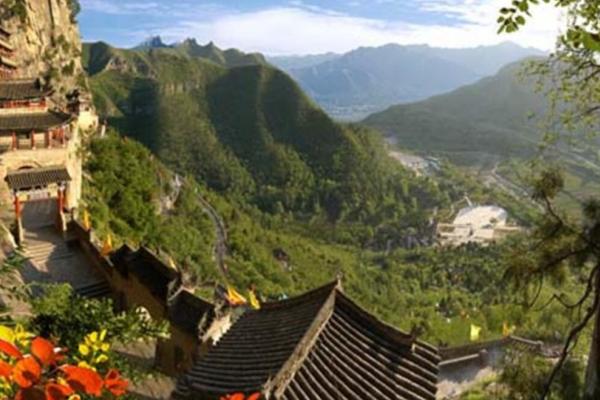
An Essential Guide to Visiting Wahuang Palace
In This Guide
- An Essential Guide to Visiting Wahuang Palace
- The Rich History and Legends of Wahuang Palace
- Main Highlights: What You Absolutely Can’t Miss
- Planning Your Visit: A Practical Guide
- Tickets: Prices, Booking, and Tips
- How to Get There: A Complete Transportation Guide
- Local Cuisine and Accommodation Nearby
- Frequently Asked Questions
- Final Thoughts on Your Trip
Nestled in the stunning landscape of She County, Hebei, Wahuang Palace (娲皇宫) stands as a testament to China’s rich tapestry of history and mythology. This magnificent site, dedicated to the goddess Nüwa, is more than just an architectural marvel; it serves as a cultural touchstone, drawing visitors into the depths of ancient Chinese beliefs and artistic achievements.
A Journey Through Time
Constructed during the Northern Qi dynasty (550-577 AD), Wahuang Palace is a compound of temples and palaces built into the steep cliffs, presenting a breathtaking sight that reflects the intricate relationship between nature and spirituality in Chinese culture. While most of the structures visible today date back to the Ming and Qing dynasties, the remnants of Northern Qi stone engravings and Buddhist grottoes whisper tales of a bygone era, inviting visitors to explore the layers of history embedded in its walls.
Must-See Features
As you wander through this expansive complex, you will encounter several highlights:
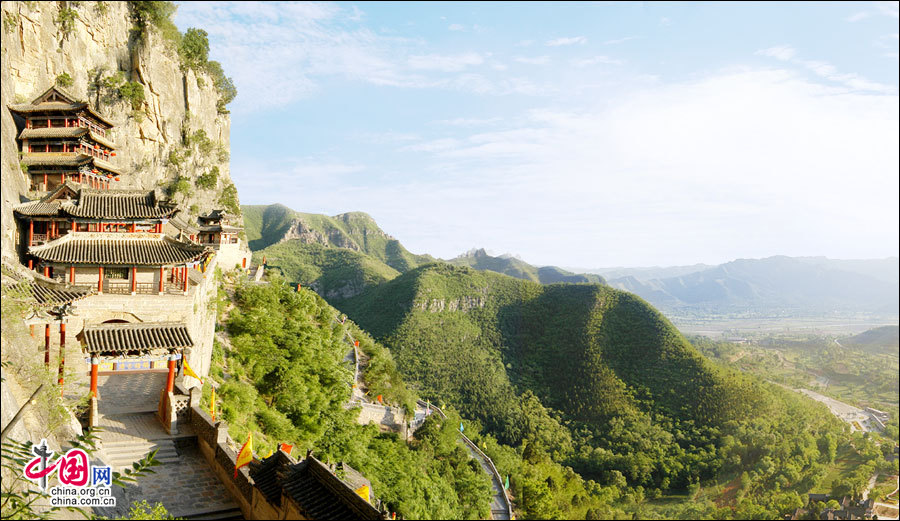
Wahuang Palace.
-
The Cliffside Temples: Ascend the cliffs to discover hillside temples that offer panoramic views of the surrounding landscape and the serene Zhang River. The climb is well worth the effort, revealing the stunning architecture and the spiritual ambiance that envelops the site.
-
The Nüwa Pavilion: Often referred to as the “Ancestral Temple of China,” this pavilion is a remarkable structure supported by nine iron chains. Its unique design and historical significance make it a focal point for visitors eager to understand the legends that surround Nüwa, the goddess believed to have mended the sky.
-
Engravings and Grottoes: Explore the ancient engravings that adorn the cliffs, along with the Buddhist grottoes that provide insight into the religious practices and artistic endeavors of the Northern Qi dynasty. These features not only enhance the aesthetic appeal of the palace but also deepen the visitor’s connection to China’s spiritual heritage.
Practical Information for Visitors
-
Opening Hours: Wahuang Palace is open daily from 8:00 AM to 6:00 PM, making it accessible for both early risers and those who prefer a leisurely start to their day.
-
Tickets: Admission to the palace is reasonably priced at 80 yuan, which includes transportation within the scenic area. Consider purchasing a combined ticket for other local attractions to enhance your experience while saving on costs.
-
Best Time to Visit: The ideal seasons for visiting are April to June and September to October, when the weather is pleasant, allowing for a comfortable exploration of the site.
Getting There
Wahuang Palace is conveniently located approximately two hours by high-speed train from Beijing, making it an excellent choice for a weekend getaway. Arrive at Handan East Station and enjoy a brief journey to the palace, where the allure of ancient China awaits.
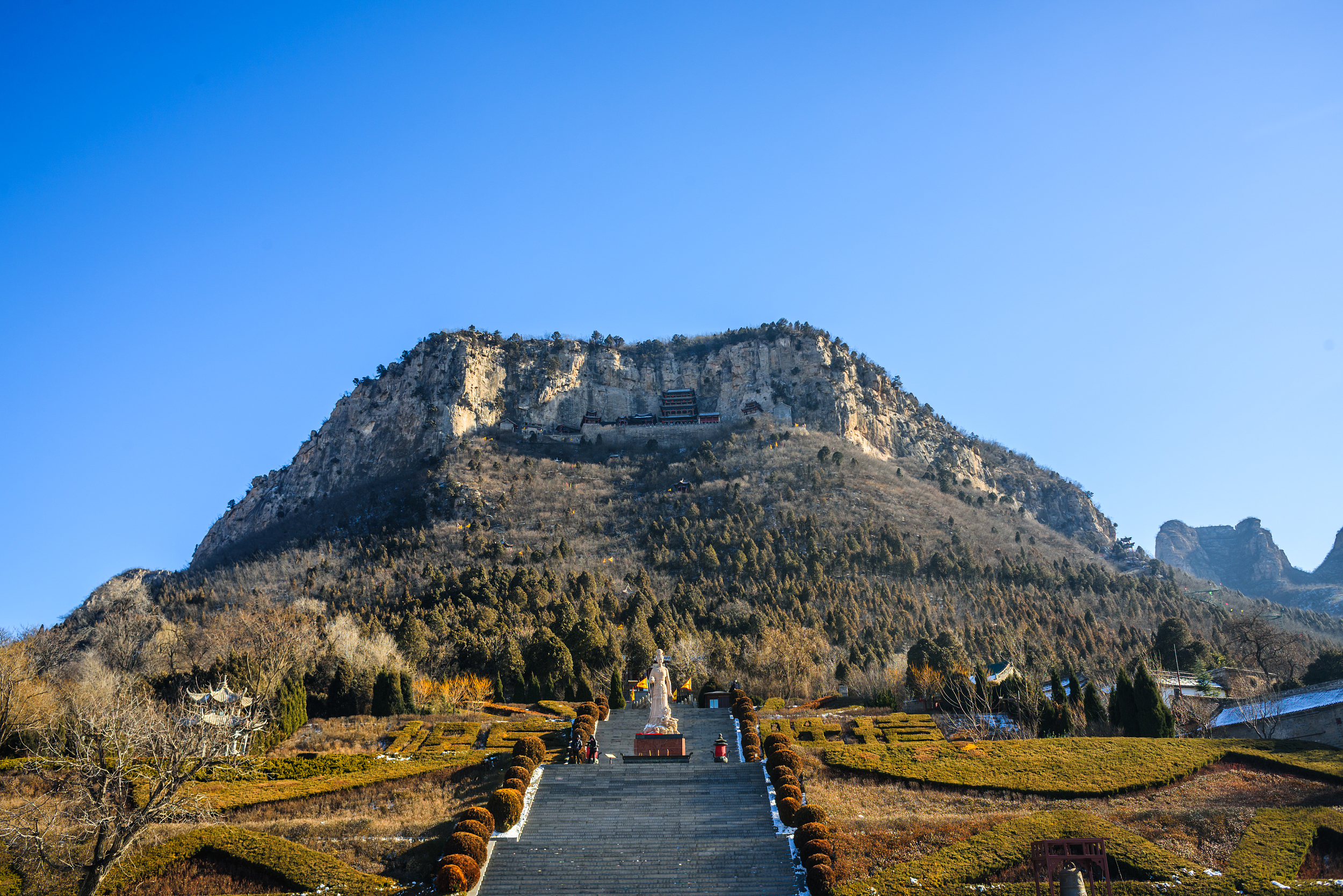
Wahuang Palace.
Conclusion
Wahuang Palace is not merely a destination; it is an experience that immerses you in the profound legacy of Chinese culture and spirituality. Whether you are a history buff, a cultural enthusiast, or simply an avid traveler, this enchanting site promises to leave a lasting impression, capturing the essence of what it means to walk through the annals of time. Embrace the opportunity to explore Wahuang Palace, where every stone tells a story, and every view evokes a sense of wonder.
The Rich History and Legends of Wahuang Palace
Nestled in the scenic hills of She County, Hebei, Wahuang Palace (娲皇宫) stands as a testament to China’s rich tapestry of history and mythology. This majestic site, dedicated to the goddess Nüwa, is not only a marvel of ancient architecture but also a cornerstone of Chinese folklore, embodying the spirit of creation and resilience.
A Historical Overview
Wahuang Palace was established during the Northern Qi dynasty (550-577 AD) and has been a revered site for centuries. Built into the rugged cliffs, the palace complex showcases remarkable architectural ingenuity, harmonizing with the natural landscape. Although most of the structures that visitors see today date back to the Ming (1368-1644) and Qing (1644-1912) dynasties, remnants of the Northern Qi era, including intricate stone engravings and ancient Buddhist grottoes, still whisper tales of the past.

Wahuang Palace.
The complex’s strategic location not only enhances its aesthetic appeal but also serves as a metaphor for the divine connection between heaven and earth, a core principle in traditional Chinese beliefs. Visitors can explore the lower buildings before embarking on a steep ascent to the hillside temples, each step revealing more about the historical significance and spiritual essence of the site.
Legends of Nüwa
At the heart of Wahuang Palace’s allure is the legend of Nüwa, a central figure in Chinese mythology. According to ancient texts, Nüwa is credited with creating humanity from yellow clay and mending the heavens after a catastrophic event that left the sky fractured. This act of restoration is symbolic of hope and renewal, resonating deeply within Chinese culture.
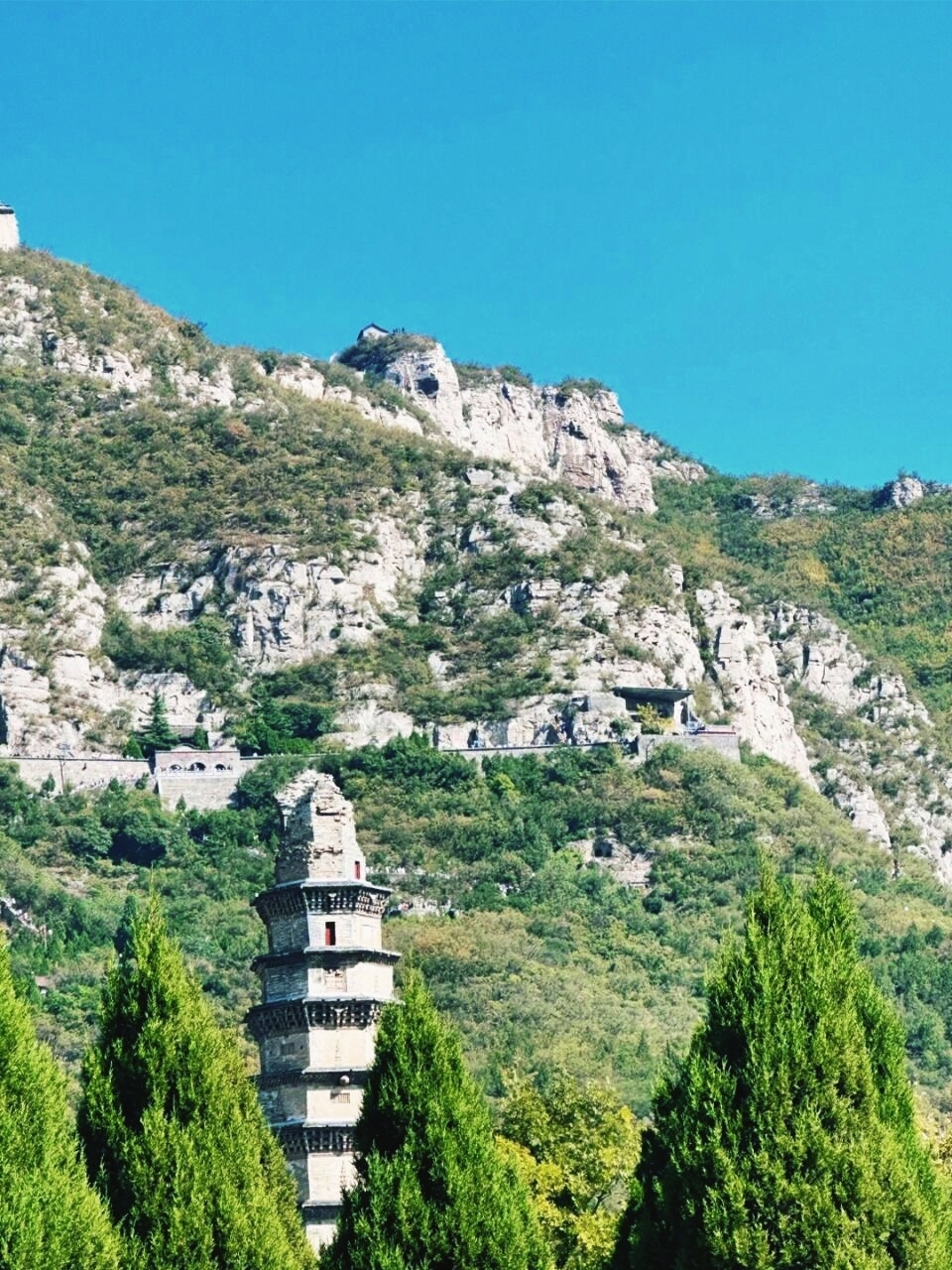
Wahuang Palace.
Wahuang Palace is often referred to as the “Ancestral Temple of China,” where ceremonies honoring Nüwa take place, especially during the annual temple fair. Visitors can witness traditional rituals celebrating her legacy, such as the breathtaking Nuwa Worship Ceremony, which encapsulates the reverence for creation and the nurturing aspects of femininity associated with the goddess.
Architectural Wonders
The architectural marvel of Wahuang Palace is further highlighted by its breathtaking features. The Nuwa Pavilion, famously suspended by nine iron chains, is an extraordinary sight, often likened to the Hanging Temple of Shanxi. This unique design not only reflects the ingenuity of ancient builders but also serves a symbolic purpose, representing the balance between nature and human creation.
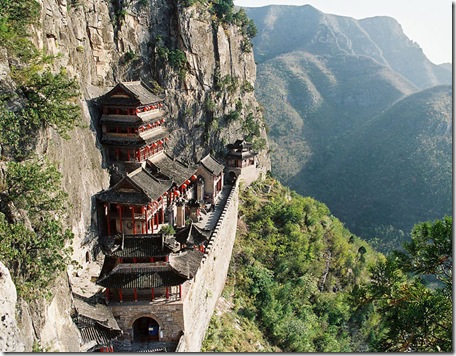
Wahuang Palace.
Visitors are encouraged to hike up the mountain to experience the panoramic views that include the majestic Zhang River, a sight that further enhances the spiritual ambiance of the location. Each corner of the palace complex is imbued with stories and artistic expressions, from the cliff-engraved sutras to the serene gardens that invite contemplation.
Cultural Significance
Wahuang Palace is more than just a historical site; it is a living museum of Chinese culture. It reflects the ancient philosophies that intertwine nature, spirituality, and art. The stories of Nüwa and the architectural splendors of the palace resonate with those seeking a deeper understanding of China’s past.
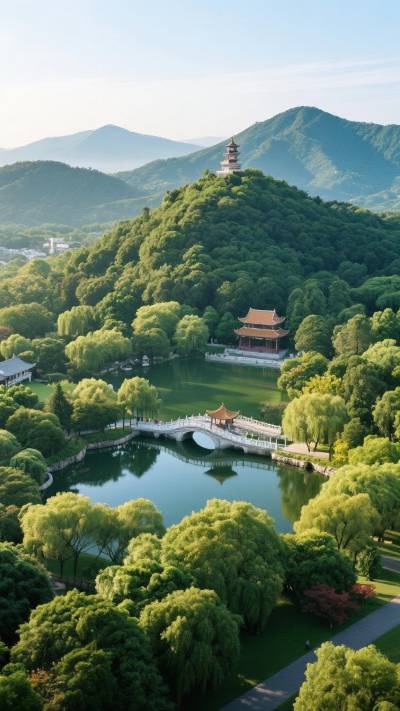
Wahuang Palace.
For international travelers interested in Chinese history and culture, Wahuang Palace offers a unique opportunity to connect with the ancient world, not only through its stunning visuals but also through the rich stories that echo through time. From the legends of creation to the intricate craftsmanship of its buildings, Wahuang Palace is a journey into the heart of Chinese heritage, waiting to be explored.
By immersing yourself in the history and legends of Wahuang Palace, you will not only witness a piece of architectural brilliance but also partake in the enduring spirit of a culture that has thrived for millennia.
Main Highlights: What You Absolutely Can’t Miss
When exploring Handan, you will find that Wahuang Palace is not just a destination; it’s a journey into the heart of Chinese mythology, history, and architectural ingenuity. Here are the main highlights that you absolutely cannot miss during your visit to this extraordinary site:
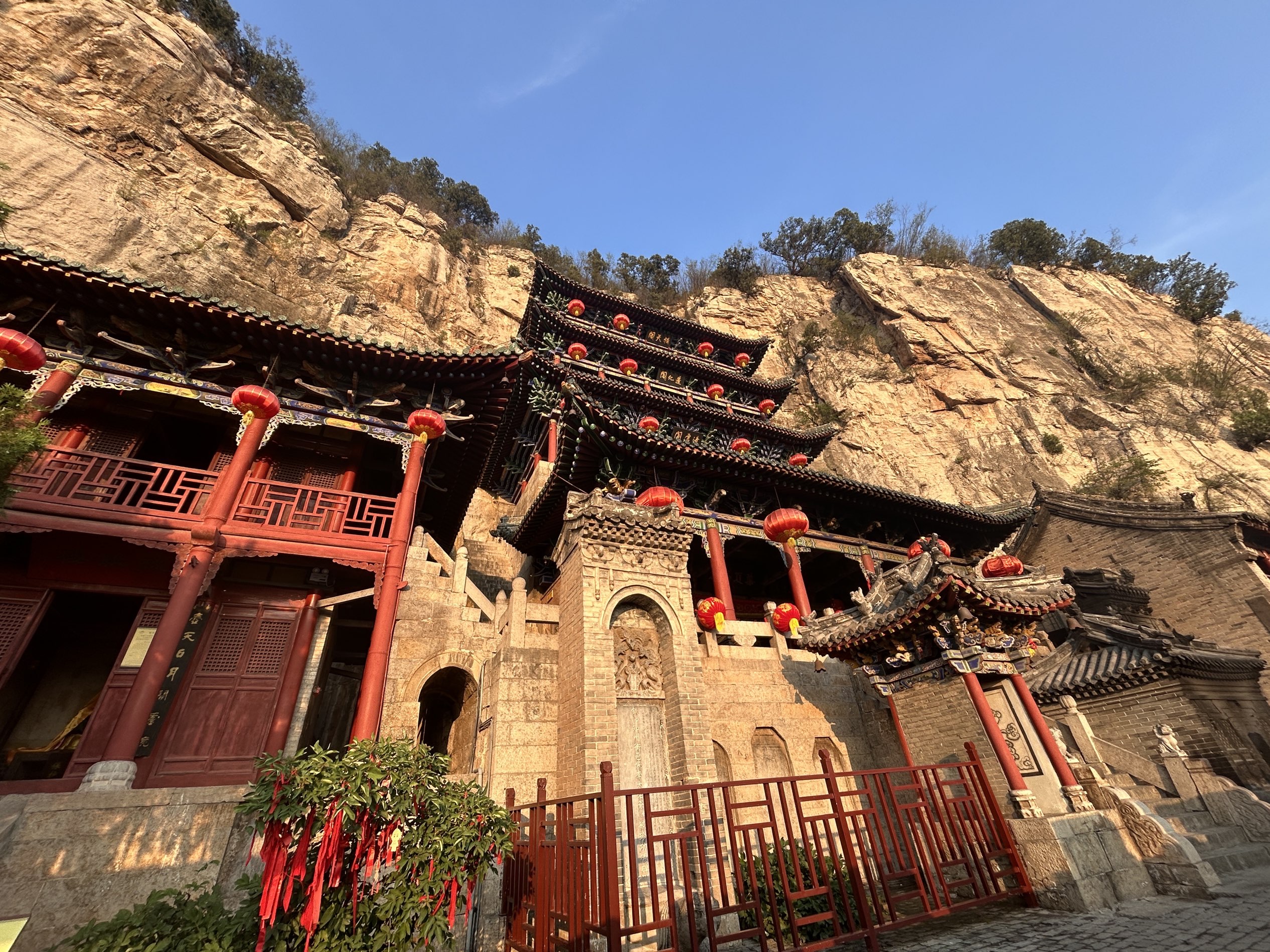
Wahuang Palace.
1. The Cliffside Architecture of Wahuang Palace
Perched dramatically against a steep cliff, Wahuang Palace serves as a stunning tribute to Nüwa, the Chinese goddess of creation and protector of humanity. The construction of this palace complex dates back to the Northern Qi dynasty (550-577 AD), showcasing architectural techniques that blend seamlessly with the natural landscape. As you walk through the compound, take a moment to admire the intricate stone engravings and the remnants of Buddhist grottoes that highlight the site’s ancient spiritual significance.
2. The Majestic Nuwa Pavilion
One of the crown jewels of the palace complex, the Nuwa Pavilion is renowned for its breathtaking views and unique construction. Suspended by iron chains, this pavilion offers an exhilarating vantage point to appreciate the surrounding mountains and valleys. Legend has it that this is where Nüwa mended the sky, making it a site of both historical and mythical importance. Don’t miss the chance to capture stunning photographs from this remarkable perch!
3. Historical Relics and Buddhist Grottoes
As you explore Wahuang Palace, be sure to seek out the Northern Qi dynasty stone engravings and the nearby Xiangtangshan Grottoes, known for their exquisite carvings dating back over 1,500 years. These grottoes are often less crowded than other famous sites, providing a peaceful atmosphere to contemplate the artistry and devotion that went into their creation. The intricate details rival those found in more renowned locations like the Yungang and Longmen Grottoes.
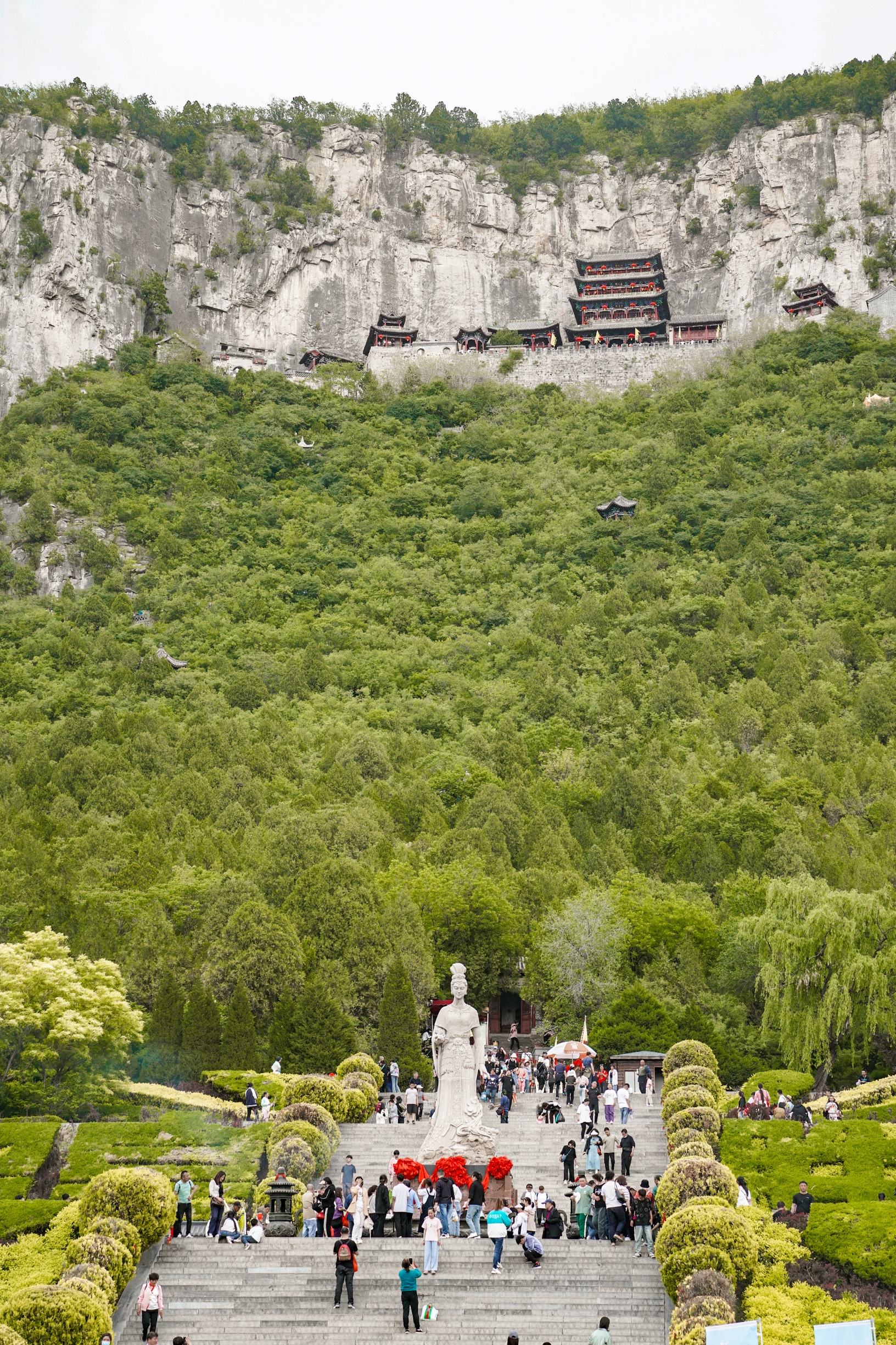
Wahuang Palace.
4. Cultural Ceremonies and Festivals
Timing your visit to coincide with local festivals can enrich your experience. The Nüwa Worship Ceremony, held at the palace, celebrates the goddess’s legacy with traditional rites and performances. This event offers a unique insight into local customs and the enduring influence of mythology in contemporary culture. Check the local calendar for events that may coincide with your visit!
5. Surrounding Scenic Attractions
Wahuang Palace is part of a broader tapestry of cultural and historical experiences in Handan. After visiting the palace, consider exploring Guangfu Ancient City, the birthplace of Tai Chi, where you can stroll through ancient streets and savor local delicacies. The Cizhou Kiln nearby showcases the region’s rich porcelain-making heritage, making it a perfect stop for art enthusiasts.
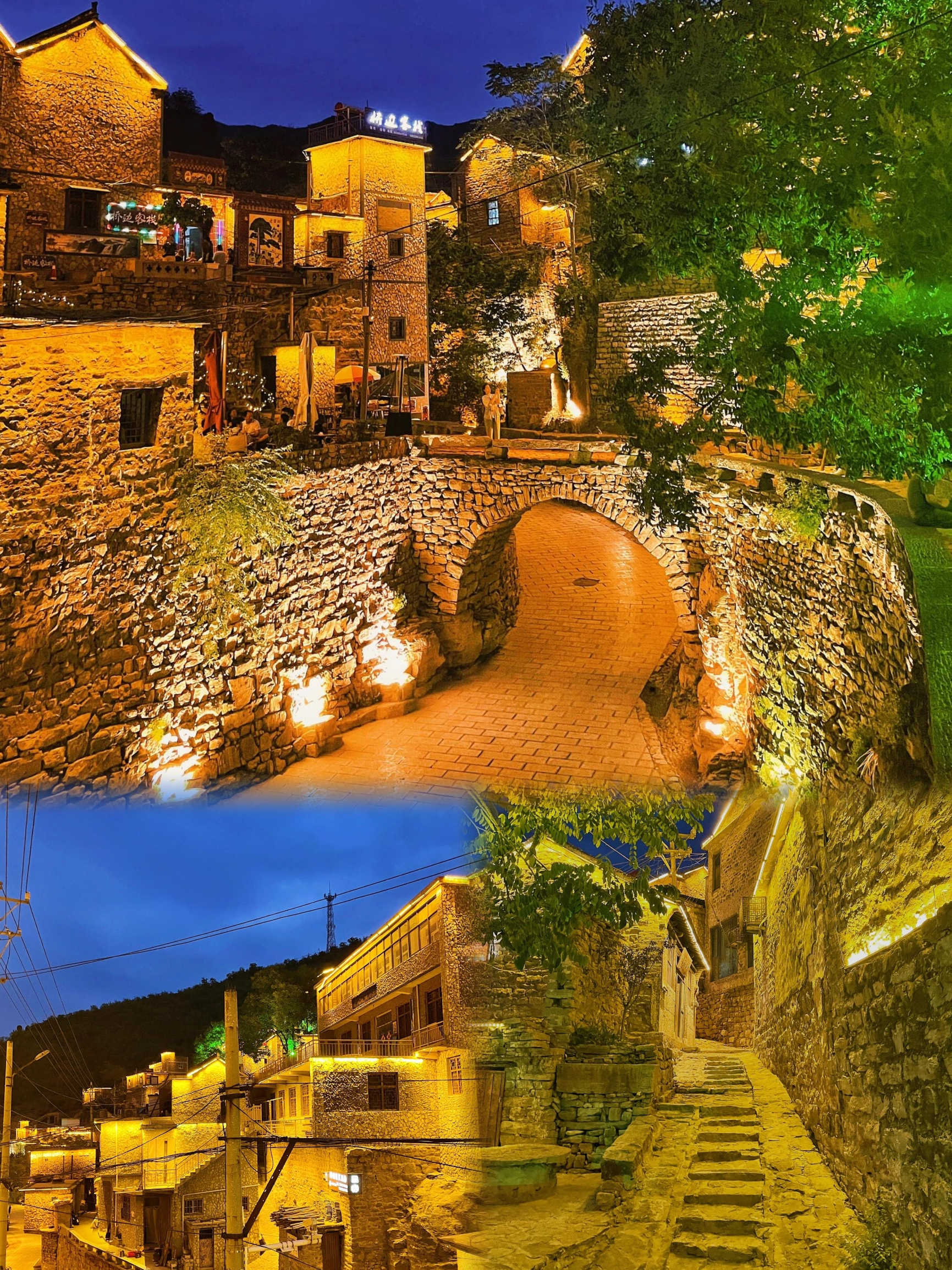
Wahuang Palace.
6. Stunning Natural Scenery
The palace’s location offers not only architectural beauty but also breathtaking natural views. The nearby Taihang Mountains provide an ideal backdrop for hiking and outdoor activities. The panoramic vistas from various lookout points around the palace are perfect for those seeking a connection with nature.
7. Practical Information
- Opening Hours: Wahuang Palace is open from 8:00 AM to 6:00 PM. Plan to arrive early to avoid crowds and fully explore the complex.
- Tickets: Entry tickets are reasonably priced, and consider purchasing combined tickets for other nearby attractions for added savings.
- Best Time to Visit: The ideal seasons are April to June and September to October, when the weather is pleasant and the surroundings are vibrant with seasonal colors.

Wahuang Palace.
In conclusion, Wahuang Palace is not merely a stop on a travel itinerary; it is a gateway into the rich tapestry of Chinese history and mythology. Whether you are a history buff, a culture enthusiast, or simply looking for stunning views, this palace will leave you with lasting memories and a deeper appreciation for China’s ancient heritage.
Planning Your Visit: A Practical Guide
Exploring Wahuang Palace: A Practical Guide for Your Visit
Nestled in the historic city of Handan, Hebei Province, Wahuang Palace offers a unique glimpse into ancient Chinese culture and mythology. Renowned as the “Ancestral Temple of the Chinese Nation,” this sacred site is dedicated to Nüwa, the goddess celebrated for her role in repairing the sky. With its breathtaking cliffside architecture and rich history, Wahuang Palace is a must-visit for any traveler interested in the depths of Chinese heritage. Here’s how to plan your visit effectively.
Getting There
Traveling to Handan:
– From Beijing: Take a high-speed train from Beijing to Handan East Station. The journey takes approximately 2 hours, with tickets priced around 188 yuan.
– From Zhengzhou: The train ride is about 1.5 hours, making it a convenient option for travelers from this major city.
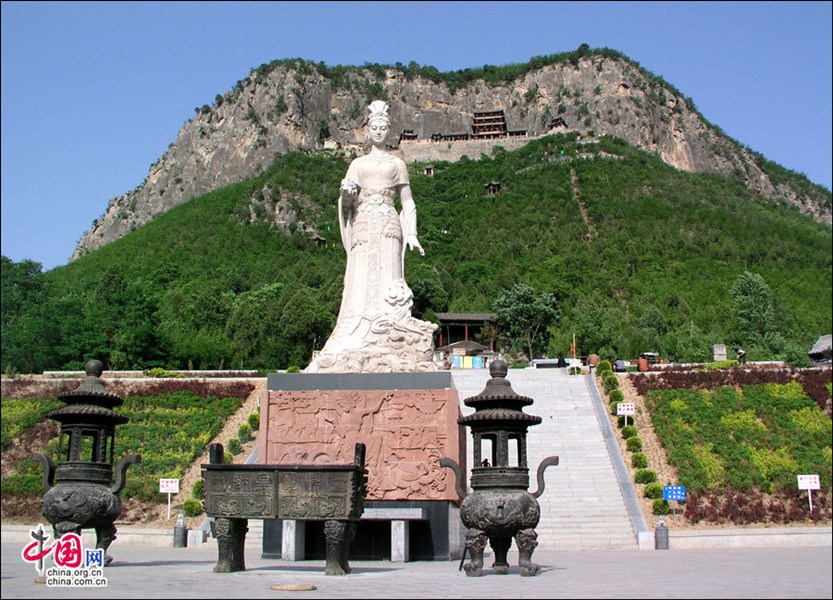
Wahuang Palace.
Local Transportation:
Once in Handan, public transportation options like buses and taxis are readily available to take you to Wahuang Palace and other attractions. Consider booking a charter or group tour for a more personalized experience.
Ticket Information
Wahuang Palace Admission:
– Ticket Price: 80 yuan (including access to scenic area transport).
– Operating Hours: Open daily from 8:00 AM to 6:00 PM.
– Tip: Purchase combined tickets for better value if you plan to visit multiple attractions in the area.
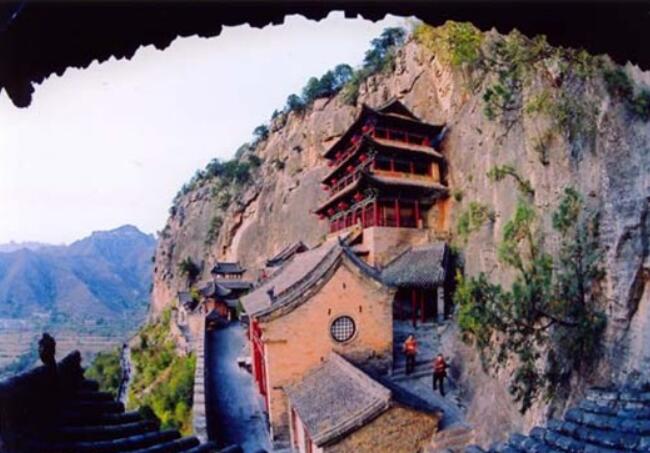
Wahuang Palace.
What to See
Highlights of Wahuang Palace:
1. Cliffside Architecture: Marvel at the ancient structures built into the rocks, with the famous Nuwa Pavilion suspended by nine iron chains.
2. Cultural Significance: Experience the rich mythology surrounding Nüwa, with historical engravings and Buddhist grottoes that date back to the Northern Qi dynasty.
3. Scenic Views: Climb to the top of the Butian Pavilion for panoramic views of the Zhang River and the surrounding landscapes.
Recommended Itinerary
For a comprehensive experience, consider this suggested itinerary for a three-day visit to Handan, focusing on Wahuang Palace:
Day 1: Arrival and Local Exploration
– Morning: Arrive at Handan East Station and check into your accommodation.
– Afternoon: Visit Congtai Park and enjoy its historical significance, followed by a stroll along Huiche Alley.
– Evening: Enjoy a night tour along the Fuyang River, soaking in the illuminated beauty of the ancient bridges.
Day 2: Wahuang Palace and Cultural Immersion
– Morning: Head to Wahuang Palace. Dedicate ample time to explore the intricate architecture and historical sites.
– Afternoon: Visit the nearby Xiangtangshan Grottoes to admire the exquisite Buddhist carvings.
– Evening: Dine at a local restaurant and sample Handan’s famous zhuaimian noodles.
Day 3: Further Discoveries and Departure
– Morning: Explore Cizhou Kiln Museum, where you can try your hand at pottery.
– Noon: Visit Guangfu Ancient City, the birthplace of Tai Chi.
– Afternoon: Return to Handan East Station for your journey home.
Best Time to Visit
The ideal seasons for visiting Wahuang Palace are April to June and September to October. During these months, you can enjoy pleasant weather, vibrant local festivals, and stunning autumn colors in the surrounding Taihang Mountains.
Accommodation Recommendations
When planning your stay in Handan, consider these options:
– Budget Hotels: Home Inn or Hanting (200-280 yuan/night).
– Unique Guesthouses: Try “Congtai Courtyard” or “Handan Memory” for a more local experience (around 300 yuan/night).
Additional Tips
- Local Cuisine: Don’t miss trying the local delicacies, such as crispy fish and donkey meat sausage, which are popular in the area.
- Cultural Experiences: Embrace the opportunity to wear Hanfu (traditional Chinese clothing) while exploring historical sites. Rentals are available in the city.
- Guided Tours: Download the “Handan Tourism” WeChat official account for updates on free guided tours and local events.
Wahuang Palace is not just a destination; it’s an immersive journey into the heart of Chinese history and mythology. By planning your visit thoughtfully, you can uncover the stories etched into the very fabric of this remarkable site.
Tickets: Prices, Booking, and Tips
When planning your visit to the magnificent Wahuang Palace, an understanding of ticket prices, booking options, and handy tips can enhance your experience at this historic site. Nestled in the serene landscape of She County in Handan, Hebei, Wahuang Palace is a treasure trove of Chinese culture and history, dedicated to the goddess Nüwa.
Ticket Prices
- Adult Admission: ¥80 (approximately $12)
- Student Admission: ¥40 (approximately $6, valid student ID required)
- Combined Tickets: For those planning to visit multiple attractions in Handan, consider purchasing combined tickets that offer better value. This can save you both time and money.
Booking Information
- Online Booking: Tickets can be easily booked through popular travel platforms such as Trip.com or directly via the Wahuang Palace official website. Booking in advance is recommended, especially during peak tourist seasons.
- On-Site Purchase: If you prefer spontaneity, tickets can also be purchased at the entrance of the palace. However, be prepared for potential queues, particularly during weekends and holidays.
Opening Hours
Wahuang Palace is open to visitors daily from 8:00 AM to 6:00 PM. To make the most of your experience, consider arriving early to explore the palatial grounds before the crowds.
Tips for a Memorable Visit
- Best Time to Visit: The most favorable seasons to experience Wahuang Palace are April to June and September to October. During these months, the weather is pleasant, and the surrounding nature is particularly beautiful.
- Transportation: Wahuang Palace is conveniently accessible via high-speed train from Beijing to Handan East Station, taking approximately two hours. Local transportation options include buses and taxis, making it easy to navigate to the palace and other attractions.
- Guided Tours: For a deeper understanding of the site’s rich history and architecture, consider joining a guided tour. Many local guides offer services that can provide context to your visit, enhancing your appreciation of the intricate details of the palace.
- Explore Nearby Attractions: After visiting Wahuang Palace, take the opportunity to explore nearby historical sites such as the Xiangtangshan Grottoes and Guangfu Ancient City. Each offers a unique glimpse into the cultural tapestry of the region.
- Photography: Don’t forget your camera! The stunning cliffside architecture and serene landscapes provide countless opportunities for breathtaking photographs.
Conclusion
Visiting Wahuang Palace is not just an exploration of a historical site; it’s a journey into the heart of Chinese mythology and culture. With the right information on ticket prices, booking options, and helpful tips, you can immerse yourself in the beauty and history of this remarkable destination. Plan your visit today and witness the grandeur of Wahuang Palace, where every stone tells a story.
How to Get There: A Complete Transportation Guide
When planning your visit to Wahuang Palace (娲皇宫), a stunning monument steeped in Chinese mythology and history, understanding how to get there is essential for maximizing your experience. Located in She County, Handan, Hebei, this magnificent site is renowned for its cliffside architecture and cultural significance. Here’s a comprehensive transportation guide to ensure your journey is smooth and enjoyable.
Getting to Handan
By High-Speed Train:
The most convenient and efficient way to reach Handan is via high-speed train. If you’re starting from Beijing, you can catch a train from Beijing West Railway Station or Beijing South Railway Station to Handan East Station.
- Travel Time: Approximately 2 hours
- Cost: Tickets typically range from 188 CNY (about 27 USD) depending on the train class and booking time.
For travelers from Zhengzhou, the journey is even shorter:
- Travel Time: About 1.5 hours
- Cost: Similar pricing applies.
By Car:
If you prefer driving, Handan is accessible via major highways from nearby cities. The journey from Beijing takes about 3-4 hours depending on traffic. Ensure your navigation app is updated, as rural road conditions can vary.
By Bus:
Long-distance buses also connect Handan with several major cities, including Beijing and Zhengzhou. However, this mode of transport is less convenient than the high-speed train.
Local Transportation in Handan
Once you arrive in Handan, you have several options to reach Wahuang Palace and explore the surrounding area:
1. Taxi and Rideshare:
Taxis are readily available at the train station and throughout the city. For a more modern option, rideshare apps like Didi offer a convenient alternative for getting around.
- Cost to Wahuang Palace: Expect to pay around 50-80 CNY (approximately 7-11 USD) from the city center.
2. Public Buses:
Handan’s public transportation system includes buses that can take you closer to Wahuang Palace. Check local bus maps for routes that head toward She County.
- Cost: Bus fares are very affordable, generally around 1-3 CNY.
Reaching Wahuang Palace
After arriving in She County, Wahuang Palace is a short drive or bus ride away. Be sure to have your accommodation or a local landmark’s address ready to show your driver.
Opening Hours:
Wahuang Palace is open daily from 8:00 AM to 6:00 PM. It’s advisable to arrive early to avoid crowds and to enjoy the cooler morning temperatures while exploring the site.
Tips for a Memorable Visit
- Best Seasons: The ideal times to visit are in spring (April to June) and autumn (September to October) when the weather is pleasant, and the natural scenery is at its best.
- Tickets: Purchasing combined tickets for multiple attractions in Handan can provide savings and streamline your visit.
- Cultural Immersion: Consider engaging in local experiences, such as trying traditional Handan cuisine or participating in cultural events held at the palace.
With this guide in hand, you are well-equipped to navigate your way to Wahuang Palace, ensuring that your journey is as enriching as the destination itself. Enjoy your exploration of this historical treasure in the heart of Hebei!
Local Cuisine and Accommodation Nearby
When visiting the breathtaking Wahuang Palace, the culinary delights and comfortable accommodations in nearby Handan enhance the cultural experience of this historic gem. Here’s a guide to savoring local flavors and finding the perfect place to rest after a day of exploration.
Culinary Delights
1. Local Specialties:
– Zhuaimian (抓面): A must-try dish in Handan, zhuaimian is a type of hand-pulled noodle known for its unique texture and flavor. Pair it with some crispy fish or pork cracklings for a true taste of the region.
– Crispy Fish: Freshly sourced from local rivers, this dish is often marinated and fried to perfection, making for a delectable main course.
– Donkey Meat Flatbread: A popular street food, this savory snack features tender donkey meat stuffed in a soft flatbread, often served with a side of spicy sauce.
– Three Wonders of Linzhang: A delightful combination of regional delicacies, this dish showcases the culinary diversity of the area.
2. Recommended Restaurants:
– Old Handan Restaurant: Renowned for its authentic zhuaimian noodles and various local dishes. The ambiance is casual and the prices are reasonable, making it a favorite among both locals and travelers.
– Cizhou Kiln Cultural Street Eateries: Here, you can find multiple small restaurants offering traditional meals, ideal for a quick and satisfying lunch after exploring the kiln museum.
Accommodations
1. Budget-Friendly Options:
– Home Inn: Located conveniently in the city center, this chain offers comfortable rooms at affordable prices (200-280 yuan/night). It’s perfect for budget travelers seeking basic amenities.
– Hanting Hotel: Another economical choice, providing clean and cozy accommodations with easy access to local attractions.
2. Unique Guesthouses:
– Congtai Courtyard: An artsy guesthouse that combines traditional Chinese architecture with modern comforts. Stay here to immerse yourself in the local culture while enjoying a peaceful atmosphere (around 300 yuan/night).
– Handan Memory: A charming guesthouse located near the ancient city, offering thematic rooms that reflect the rich history of Handan. It’s an excellent choice for those looking for a unique experience.
3. Mid-Range Hotels:
– Handan International Hotel: For travelers seeking more luxurious accommodations, this hotel provides spacious rooms and a range of amenities. It’s well-situated for easy access to Wahuang Palace and other historical sites.
Final Thoughts
After a day of marveling at the stunning architecture and rich history of Wahuang Palace, indulging in Handan’s delectable cuisine and retreating to a comfortable accommodation will enhance your overall experience. Whether you choose to savor local dishes at bustling eateries or relax in a cozy guesthouse, Handan promises a memorable journey through time and taste.
Frequently Asked Questions
Frequently Asked Questions about Wahuang Palace
1. What is Wahuang Palace known for?
Wahuang Palace, also known as the Ancestral Temple of the Chinese Nation, is dedicated to the goddess Nüwa, who is celebrated in Chinese mythology for mending the sky. The palace features stunning cliffside architecture and is a significant historical site, boasting remnants from various dynasties, including the Northern Qi, Ming, and Qing.
2. How do I get to Wahuang Palace?
Wahuang Palace is located in She County, Handan, Hebei Province. The most convenient way to reach it is by taking a high-speed train from Beijing to Handan East Station, which takes approximately 2 hours. From the station, you can take a taxi or local bus to the palace.
3. What are the opening hours and ticket prices?
Wahuang Palace is open daily from 8:00 AM to 6:00 PM. The entrance fee is approximately 80 yuan, which includes transportation within the scenic area. It is advisable to check for any discounts or combined ticket offers for nearby attractions.
4. What are the must-see features within Wahuang Palace?
Visitors should not miss the Nüwa Pavilion, which is suspended by iron chains on a cliff, offering breathtaking views. Additionally, explore the Cliff Engraved Sutras and the ancient stone engravings from the Northern Qi dynasty. The surrounding temples and the scenic hiking trails also provide a unique experience of both nature and history.
5. Are there any nearby attractions worth visiting?
Absolutely! Nearby attractions include the Xiangtangshan Grottoes, renowned for their exquisite Buddhist carvings, and the Congtai Park, famous for its historical significance. The Guangfu Ancient City, the birthplace of Tai Chi, is also nearby and offers a rich cultural exploration.
6. When is the best time to visit Wahuang Palace?
The best seasons to visit are April to June and September to October. During these months, the weather is pleasant, making it ideal for outdoor exploration. Particularly, the Nüwa Palace Temple Fair in April attracts visitors with cultural performances and local festivities.
7. Is Wahuang Palace suitable for family visits?
Yes, Wahuang Palace is an excellent destination for families. The site offers engaging historical insights and beautiful natural scenery, making it enjoyable for visitors of all ages. Additionally, the hiking trails provide an opportunity for physical activity and exploration.
8. Can I find accommodations nearby?
Yes, there are several accommodation options in Handan, ranging from budget hotels to unique guesthouses. Staying in the Congtai District will place you conveniently close to Wahuang Palace and other local attractions, ensuring an enjoyable and immersive experience in the region.
Final Thoughts on Your Trip
As your journey through the historically rich landscapes of Handan comes to a close, it’s time to reflect on the profound experiences and memories forged at Wahuang Palace and beyond. This hidden gem in Hebei is not merely a stop on the map; it’s an invitation to delve deep into the tapestry of Chinese culture and history.
A Journey Through Time
At Wahuang Palace, you stood beneath the magnificent cliffs that cradle the essence of the ancient goddess Nüwa. This tranquil yet awe-inspiring site, with its intricate architecture and breathtaking views, offers a glimpse into a long-lost world where legends were born. The echoes of the Northern Qi dynasty, mingled with the artistry of the Ming and Qing dynasties, create an atmosphere that transports you far beyond the present.
Exploring Handan’s Rich Heritage
Venturing beyond the palace, Handan reveals itself as a vibrant narrative of Chinese civilization. From the serene beauty of Congtai Park to the historical significance of the Cizhou Kiln, every corner of this city is steeped in stories waiting to be uncovered. The experience of walking through ancient streets, tasting local delicacies, and engaging with friendly locals enriches your understanding of the region’s cultural fabric.
Culminating Insights
– Cultural Immersion: Engage with the local traditions, from Tai Chi in Guangfu Ancient City to the artisanal crafts at the Cizhou Kiln.
– Historical Appreciation: Each site, from the Xiangtangshan Grottoes to the Northern Dynasties Archaeological Museum, adds layers to your historical perspective.
– Tranquil Escape: Handan’s beauty lies not only in its historical significance but also in its peaceful charm, offering a refreshing contrast to the bustling tourist hotspots.
Final Reflections
As you prepare to leave this enchanting region, take with you the stories, the sights, and the profound sense of connection to China’s illustrious past. Handan is a reminder that the journey through history is not just about the landmarks you see, but the heritage you feel and the memories you create. So, whether you’ve come to explore or to reflect, may your experiences at Wahuang Palace and the wider Handan area inspire a deeper appreciation for the rich tapestry of Chinese culture.
In the words of the ancients, “A journey of a thousand miles begins with a single step.” Your adventure through Handan is just the beginning—may it inspire future travels and explorations into the heart of China’s vast history. Safe travels!